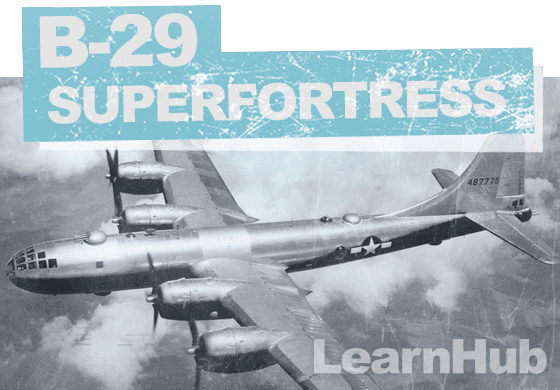The B-29 Superfortress was a heavy bomber aircraft used by the United States military during World War II and the Korean War. It was developed by Boeing and was one of the largest aircraft of its time, with a wingspan of over 141 feet and a length of 99 feet. Some of the key capabilities of the B-29 include:
High-altitude strategic bombing: The B-29 was designed to fly at high altitudes (up to around 35,000 feet) to avoid enemy defenses and deliver its payload of bombs with accuracy. It was equipped with a radar-based bombing system called the “Norden bombsight,” which used a complex series of mirrors and lenses to calculate the correct release point for bombs based on the aircraft’s speed, altitude, and heading.
Long-range capabilities: The B-29 had a range of over 3,000 miles, allowing it to reach targets deep in enemy territory. It was also equipped with air-to-air refueling capabilities, which further extended its range and allowed it to fly nonstop missions.
Defensive armament: The B-29 was armed with a variety of weapons for self-defense, including machine guns and turrets. It also had armor plating to protect the crew and vital systems from enemy fire.
Electronic warfare: The B-29 was equipped with a range of electronic warfare systems, including radar and electronic countermeasures, to help it evade enemy defenses and detect enemy aircraft.
Overall, the B-29 was a formidable aircraft that played a key role in the Allied victory in World War II and the Korean War.
- The Battle of Midway: Turning the Tide in the Pacific - June 7, 2023
- The D-Day Operation of June 6, 1944 - June 6, 2023
- The B-29 that Changed History - June 4, 2023



